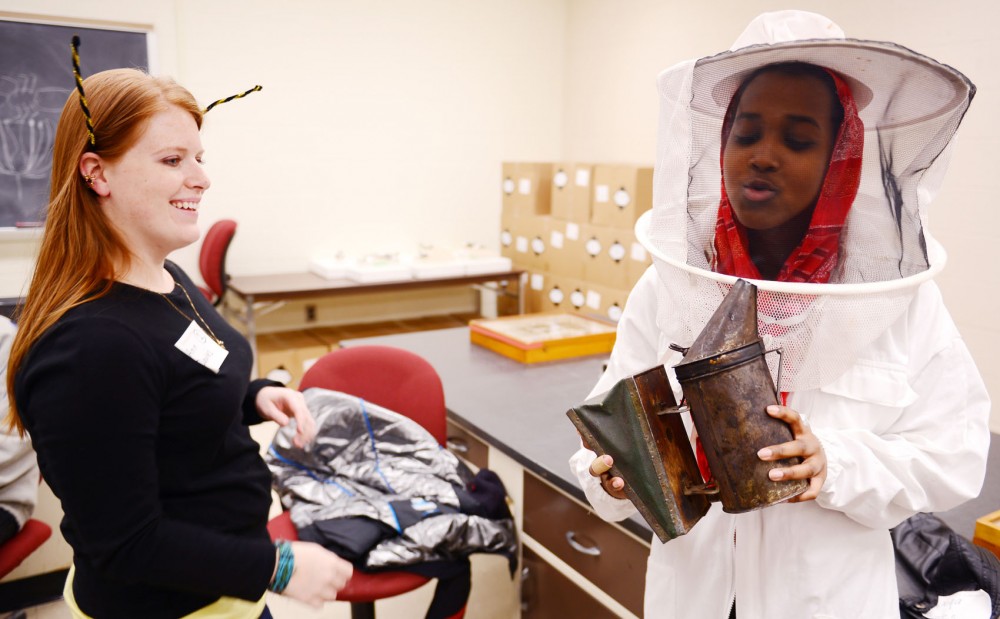Growing up, Champlin Park High School freshman Mela Nguyen said her community wasn’t exposed to much healthy food.
“I grew up in north Minneapolis,” Nguyen said, “and all I [saw was] fast food.”
Nguyen recently joined the Youth Farm and Market Project, a program that teaches adolescents about urban agriculture and healthy, sustainable food.
Youth Farm joined a number of organizations Friday for the first annual Growing Food, Growing Youth: The Bud Markhart Urban Youth and Food Day on the University of Minnesota’s St. Paul campus
Markhart, who died last June, worked to increase interest in agriculture among students from different cultures.
The event brought together high school students from across the Twin Cities to show how food affects their lives and how it can be fun, too.
“With contemporary life, [students] tend to see food as beginning in a restaurant or in a grocery store,” said Food Science and Nutrition professor Craig Hassel. “We’re trying to bring back a more meaningful experience around food for students.”
Throughout the day, students experimented with native Minnesotan food, cooking wild rice and concocting their own all-natural salad dressing.
They learned about hydroponic farming — using all water but no soil to grow crops — and micro greens, or plants harvested at an early seeding stage that are often used in fine cooking.
They also got a taste of college by exploring the St. Paul campus and learning about the University’s admission process — a new experience for some students.
“Not everyone is able to have a campus tour,” said Elizabeth Zalanga, a junior at Central High School in St. Paul. “It’s really interesting, and it gives people an insight into what college is like.”
Markhart’s friends and colleagues created Friday’s annual event to carry on his work.
“Bud always placed his students first. One of the things that he wanted to do was not just go out [to the community] but to bring folks here,” said University alumnus Seitu Jones, a visual artist and friend of Markhart’s.
Jones said it was “refreshing” to see a diverse group of students interested in sustainable food at the University.
“All too often,” Jones said, “we see a group of kids of color and … the perception is that these kids have no interest or no desire in agriculture, and here they are.”
About 76 percent of students enrolled in the University’s College of Food, Agricultural and Natural Resource Sciences this spring are white, according to the Office of Institutional Research.
Sen. Foung Hawj, DFL-St. Paul, who represents the city’s East Side, told students in a speech that diverse youth involvement is essential for the future of farming.
“We need young people who are the cutting edge of technology in agriculture,” Hawj said.
Hassel said he hopes showing students how food relates to their lives beyond consumption will nurture their interests in agriculture.
“[It’s] something that is part of their connection to place, their connection to community and their connection with family.”
Nguyen said the event inspired her to bring what she’s learned about sustainable agriculture and healthy food back to the neighborhood she grew up in.
“I could probably speak to the people of north Minneapolis so they open their eyes and see that what they’re eating is unhealthy.”


